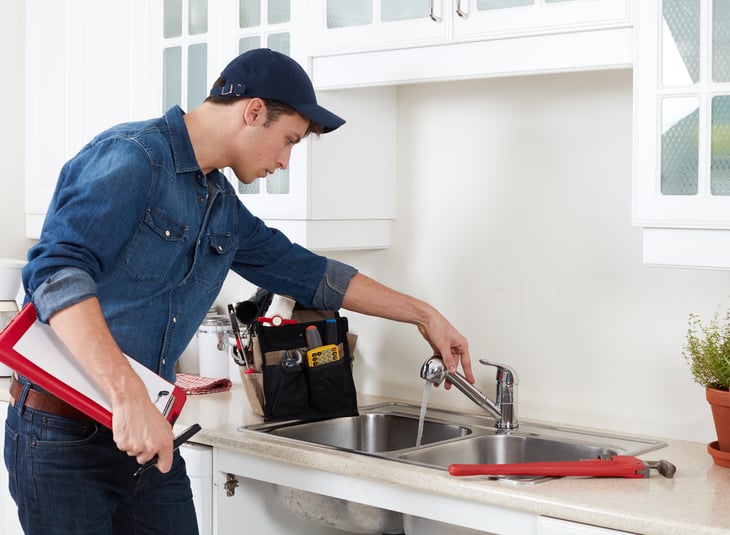
7 Ways to Avoid Pricey Home-Repair Surprises in 2023

Editor’s Note: This story originally appeared on The Penny Hoarder.
For many of us, there’s nothing quite like spending lots of time at home to start noticing the literal (or metaphorical) cracks in the foundation.
Maybe your kitchen could use some remodeling TLC, or perhaps you have appliances that desperately need to be replaced (or even some combination of both).
Whatever it is, the home maintenance and remodel industry has been on a huge upward trajectory for years now, and while the experts predict it might start to slow down in 2023 (by about 7.4{dd3cf16dc48cbccde1cb5083e00e749fe70e501950bc2e0dea1feff25a82382f} according to the Remodeling Futures Program at the Joint Center for Housing Studies of Harvard University) — “slow” isn’t quite the word we’d choose for this $400 billion industry.
In fact, Angie’s List (now called Angi) found that the average household spending on home-related projects in 2022 was $12,904, with a whopping $8,484 of that going towards home improvement and $2,467 towards home maintenance.
So if you’re one of the many people trying to map out your home project plans for 2023, keep reading.
We’ve got seven of our best penny-hoarding tips right here to help you make the most of your remodeling and home maintenance budget.
1. Don’t Ignore Your House’s Cries for Help

Your house can’t talk but it can send you messages. If it’s crying for help, ignoring the message could cost you money later.
Don’t ignore home repairs, and you’ll save in the long run. Here are seven you can’t afford to put off.
- Anything involving water. A small wet spot can be the sign of a leak somewhere. Eventually that leak will grow and possibly destroy floors, walls, furniture, and more. A leaky faucet, running toilet, or dripping water heater can cost more in water bills than the repair would.
- Anything involving electricity. Flickering lights, bad outlets or switches, tripping breakers, and GFI outlets that won’t reset can be signs of electrical problems, which could lead to fires.
- Pests. Rodents and bugs can do lots of damage if left alone.
- Peeling caulk and paint. Once the protective caulk or paint is gone, water gets in and causes damage.
- Broken or malfunctioning HVAC. Problems with your heating, ventilation and air conditioning (HVAC) could mean you’re too sweaty or too chilly. But temperature swings inside the home can lead to problems. Additional humidity could cause mold and cold temperatures could cause pipes to freeze.
- Cracks. Small cracks are normal. Big or changing cracks aren’t.
- Smoke alarm and carbon monoxide detectors. Working detectors save lives. Change the batteries regularly.
- Darkening ceilings near fireplaces. Dark places or a sooty smell can mean the fireplace isn’t drafting properly, which can let deadly gasses inside.
2. Keep Up With Home Maintenance

Maintenance is usually cheaper than repairs, so keeping up with checkups around your home can help you avoid a bigger repair bill later. It’s smart to figure out how much to budget for home maintenance. Here are the things you should consider:
- Prevent moisture problems. Water can be evil when it shows up in places it shouldn’t. Routinely check your gutters, sump pump, water heater, faucets, drains, septic tanks, and irrigation systems.
- Maintain appliances and equipment. Do annual HVAC maintenance and change filters regularly. Check the connections in the laundry room and clean the dryer vent. Change filters and clean the range hood in the kitchen.
- Keep up the exterior. Keep dirt away from the house so water can drain correctly. Inspect the paint and siding to make sure they’re looking good and doing their job of protecting your house. Maintain caulk around openings. Inspect chimneys. Service the electric garage door.
Financial experts recommend putting away about $200 a month for home maintenance. That way, you’ll have $2,400 a year, which can hopefully cover the maintenance and possible repairs.
3. Know When to DIY and When to Use a Pro

Sometimes it’s necessary to call in the pros when tackling home maintenance or home improvement projects.
Do you really want to DIY and regret it?
When deciding to DIY or hire a pro, ask yourself how much experience you really have. Things often look easier to do on TV or in a YouTube video than they really are.
Experts say to avoid DIY-ing anything involving electricity (especially 220 circuits) or water unless you have experience. Things can go bad very quickly.
4. Get Bids for Home Projects

If you need professional help for your home, getting bids on home projects can save you lots of money and time.
A professional handyperson can handle a wide variety of jobs like caulking, painting, gutter cleaning, patching drywall, installing tile, hanging objects, and installing fixtures. Making a list of what you want done can be helpful so you can prioritize if you only have a handyperson hired for a few hours.
When looking for the right expert for your home project:
- Learn about the project by watching videos. This will help you know if someone’s time estimate seems way off.
- Ask for recommendations. Neighbors, friends, and family often know good people who do good work. Also, real estate agents will be able to tell you who they recommend to get homes ready for sale.
- Websites and apps make it easy to research who can do what you need. Some even allow you to post a request for someone to bid on your project.
- Read reviews before you hire someone.
Don’t be afraid to ask questions and discuss exactly what the estimate includes and what the payment terms are. It’s your home and your budget.
5. Do What You Can to Lower Electric Bills

Some simple things can help you get a lower electric bill each month.
- Seal cracks and leaks.
- Upgrade to more energy-efficient equipment.
- Use fans.
- Air-dry laundry as much as possible.
- Change to LED lighting.
You can save on other utility bills, too, with attention to your consumption habits. For instance, some simple reductions in water use could mean saving money on water bills.
6. Know What Your Home Insurance Covers

Disasters or repairs can ruin your budget. Homeowners insurance can help protect your property and belongings from damage and losses. It also provides liability coverage.
But it isn’t always easy to know what is covered and what isn’t. And when is it worthwhile to file a claim?
All homeowners policies are not created equal, and they can also vary widely based on where you live and in what kind of dwelling. It’s important to understand when it can help you out — and when it can’t. Here’s an article that will help you learn what home insurance covers.
7. Homebuyers: Don’t Skip Home Inspections

If you’re ready to dive into the world of home ownership or move into a new home, don’t get so caught up in the excitement that you make a big mistake.
Following this eight-point home inspection checklist could end up throwing cold water on your plans, but it will also prevent buyer’s remorse if you’ve fallen in love with a money pit.
Inspectors look at more than 1,000 things throughout a house. In general, those things are:
- Structural components
- Roof
- Attic and insulation
- HVAC systems
- Plumbing and water
- Electrical and wiring
- Outside the house
- Appliances
In today’s real estate market, forgoing the inspection could make your offer more attractive to the seller, but the average inspection cost of $350 could save you thousands of dollars down the line.
